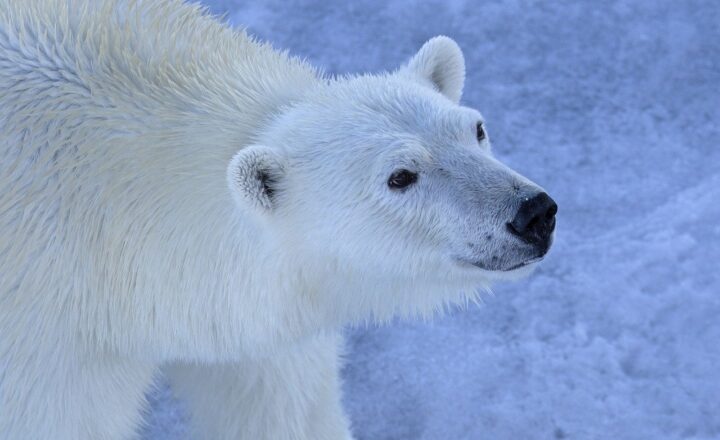Panda Conservation Success Stories: The Global Effort to Save These Icons
November 15, 2024

Pandas have long been considered the beloved symbols of conservation efforts worldwide. With their distinctive black-and-white coloring and playful nature, they have captured the hearts of millions. However, for much of the 20th century, giant pandas faced severe threats due to habitat loss, poaching, and breeding challenges, sending their population into a steep decline. Thankfully, dedicated global efforts in panda conservation have started to pay off, illustrating that with coordinated action, even the most endangered species can be brought back from the brink of extinction.
1. The Resilience of the Panda Population
Pandas, indigenous to the mountain ranges of central China, rely heavily on bamboo as their primary food source. Unfortunately, deforestation and climate change have led to habitat fragmentation, threatening their survival. In the 1970s, it was estimated that there were less than 1,000 giant pandas left in the wild. As a result of focused conservation strategies, the latest estimates suggest that their numbers have risen to over 1,800 individuals.
This rise marks a significant achievement, but the path ahead is still fraught with challenges. The journey to recovery was characterized by collaboration between governments, NGOs, scientists, and local communities. Here are some examples of successful conservation strategies:
2. Protected Reserves and National Parks
One of the most crucial steps in panda conservation has been the establishment of protected habitats. The Chinese government, recognizing the urgency of the situation, created numerous nature reserves and national parks dedicated to the preservation of panda habitats. Some prominent examples include:
- Wolong Nature Reserve: Located in Sichuan province, this reserve covers more than 200,000 acres and is home to one of the world’s largest captive-breeding centers for pandas. It plays a vital role in both research and conservation efforts.
- Giant Panda National Park: Officially established in 2021, this park spans three provinces (Sichuan, Shaanxi, and Gansu) and covers over 10,000 square kilometers. It integrates several smaller reserves into a larger ecosystem that encourages genetic diversity and natural behaviors among panda populations.
The creation of such protected areas has not only safeguarded habitats but has also reduced human-panda conflicts, allowing these magnificent creatures to thrive in their natural environment.
3. Captive Breeding Programs
Captive breeding has been another cornerstone of panda conservation. In facilities like the Chengdu Research Base of Giant Panda Breeding, scientists and zookeepers have honed techniques to encourage breeding in captive populations. This work has resulted in:
- Over 600 captive pandas born since the center’s inception, many of which have been successfully reintroduced into the wild.
- Innovative approaches such as artificial insemination, which have greatly increased the chances of breeding success for this notoriously difficult species to breed in captivity.
Captive breeding programs have not only contributed to boosting the population but also furthered scientific research, providing invaluable information on panda reproduction, genetics, and health.
4. Community Engagement and Education
An often-overlooked aspect of conservation is involving local communities in the process. Recognizing that communities living near panda habitats play a crucial role in their survival, conservationists have emphasized education and economic alternatives to poaching and habitat destruction. Examples include:
- Eco-tourism Initiatives: Programs have been established to encourage eco-tourism, allowing locals to benefit economically from the preservation of panda habitats while educating tourists about the importance of panda conservation.
- Community Workshops: Engaging workshops have been organized to educate local populations about the ecological importance of pandas and habitat preservation, helping build a sense of ownership and responsibility towards their environment.
Community involvement is pivotal in creating a sustainable conservation model that benefits both wildlife and humans, ultimately leading to improved protection for the giant panda.
5. International Cooperation and Research
Panda conservation is not solely a national concern. It has become a global effort, with international organizations working alongside the Chinese government to promote research, funding, and public awareness. Organizations such as the World Wildlife Fund (WWF) have played significant roles in:
- Funding conservation projects and research initiatives in panda habitats, further enhancing scientific knowledge and protection efforts.
- Raising global awareness through campaigns, fostering a broader understanding of the issues facing pandas, and encouraging worldwide support for conservation efforts.
These vital partnerships have led to enhanced strategies and adaptive management techniques that have transformed panda habitats and reinforced conservation laws.
Conclusion: A Collaborative Future for Pandas
The story of panda conservation is one of hope, resilience, and collaboration. By working together through protected reserves, captive breeding programs, community engagement, and international cooperation, we have witnessed a remarkable turnaround in the pandas’ fortunes. However, the work is far from over. As climate change poses new threats and habitat protection remains crucial, ongoing efforts will be needed to ensure that these iconic animals not only survive but thrive in the wild.
Further initiatives that prioritize sustainability, habitat restoration, and global awareness will be critical in this endeavor. Panda conservation illustrates that when we come together for a common cause, we can enable endangered species to reclaim their rightful place in our world and ensure they remain part of the planet’s biodiversity for generations to come.







